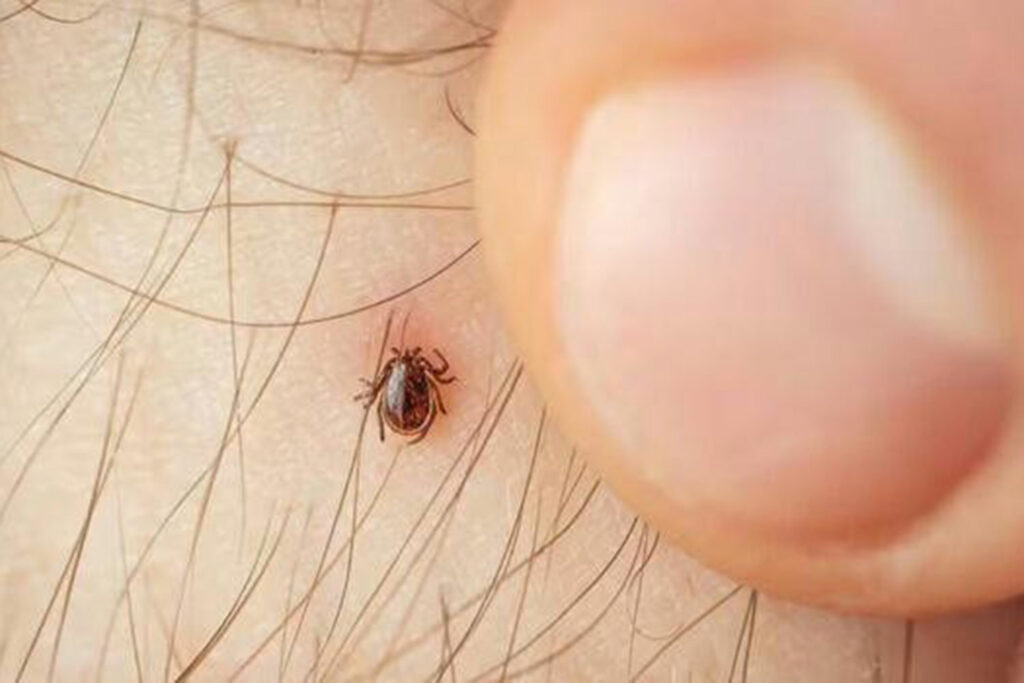Britons are being warned of dangerous ‘vampire bugs’ that are crawling in a range of green spaces, including woods and parks.
Many of the blood-sucking ticks are infected and pass on the dreaded Lyme disease, which can leave victims unable to move or speak, and can also carry a fatal brain swelling disease called tick-borne encephalitis.
NHS England has clarified that not all ticks in England carry the bacteria that causes Lyme disease.
According to the NHS website, an early sign of Lyme disease for some individuals is a circular or oval-shaped rash around the area of a tick bite. This rash can develop up to three months after being bitten by an infected tick, but typically appears between one and four weeks after exposure.
These eight-legged blood-sucking creatures can often hitch a ride into your home on pets and can latch onto humans who have been walking through long grass in tick-infested areas.
The blood-sucking ticks have only a sharp bite, similar to a wasp sting. And they relish in the mix of heat, humidity and rain that is affecting the British summer this year.
 Ticks relish in the mix of heat, humidity and rain and in Dorset, home of the New Forest parklands, residents have been warned to take extra precautions when walking outdoors.
Ticks relish in the mix of heat, humidity and rain and in Dorset, home of the New Forest parklands, residents have been warned to take extra precautions when walking outdoors.
Health Dorset warns on its website: “It’s tick season, so whilst you’re out enjoying our wonderful Dorset countryside and seaside, take care to avoid tick bites.
“Contact your GP if you notice a clear bullseye rash or feel unwell with flu-like symptoms.”

Ticks are small spider-like creatures found in grassy or wooded areas© Getty
How to remove a tick safely?
The NHS advises:
• Use fine-tipped tweezers or a tick-removal tool. You can buy these from some pharmacies, vets and pet shops
• Grasp the tick as close to the skin as possible
• Slowly pull upwards, taking care not to squeeze or crush the tick.
• Dispose of tick when removed
• Clean the bite with antiseptic or soap and water.


